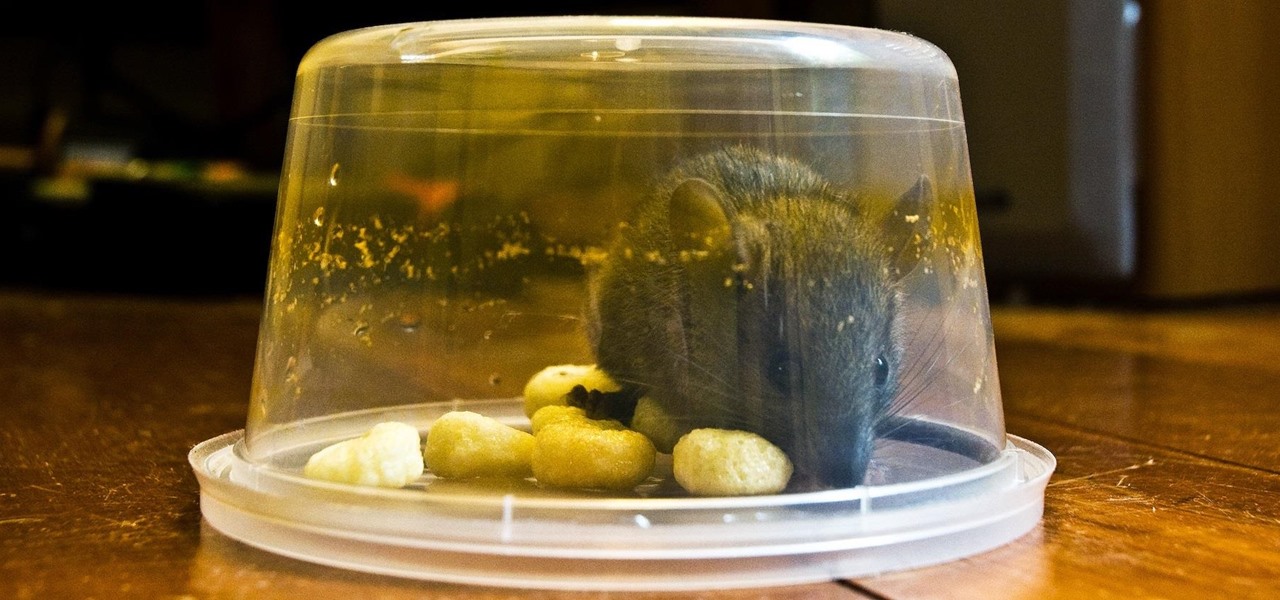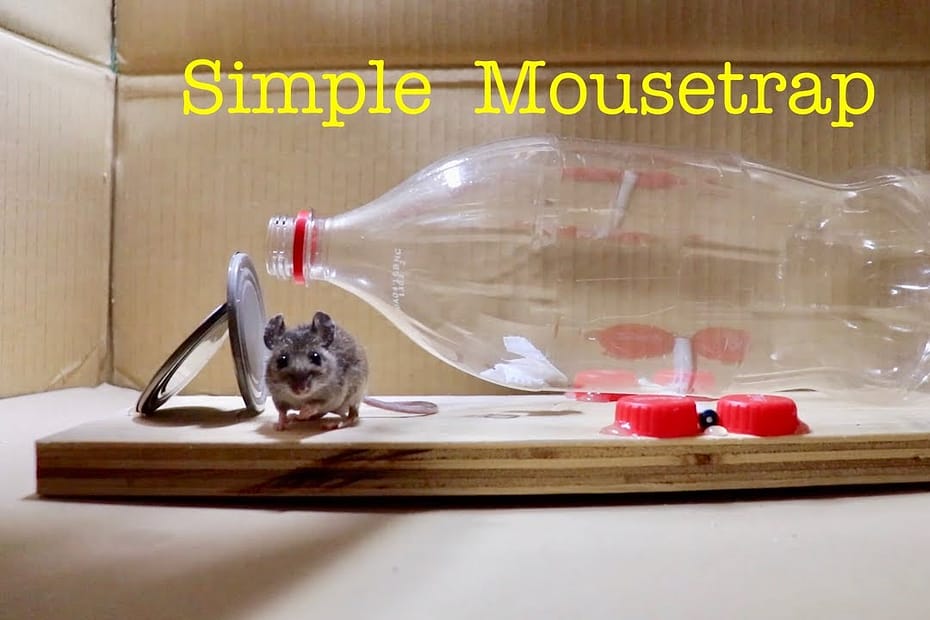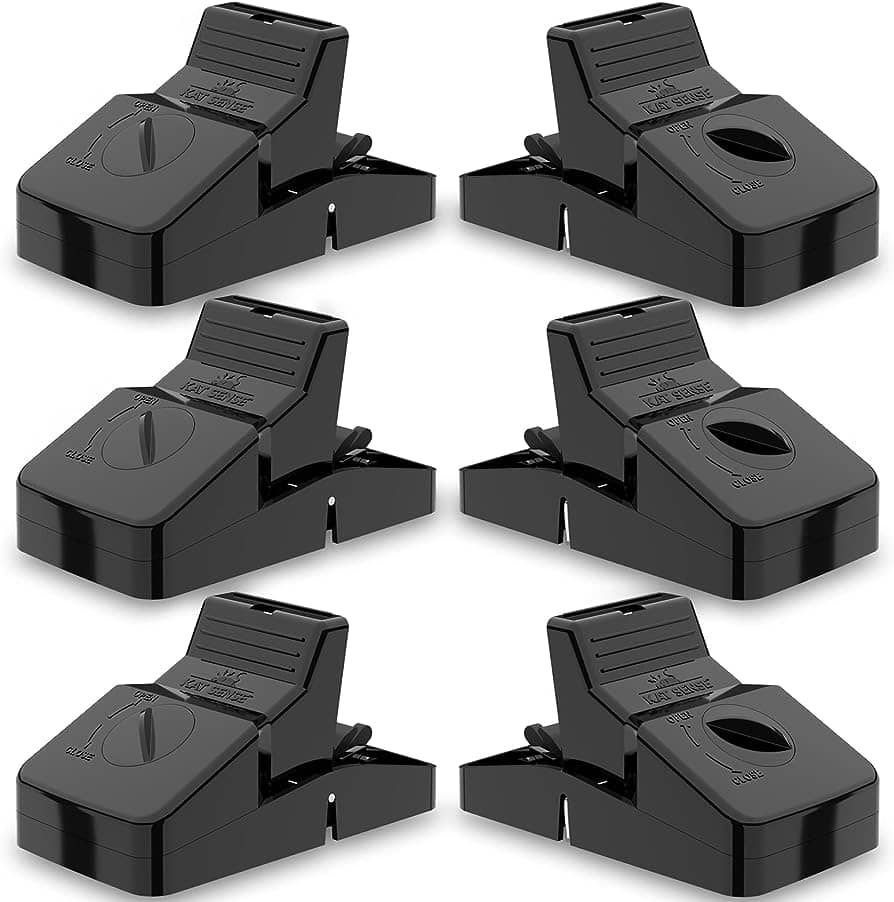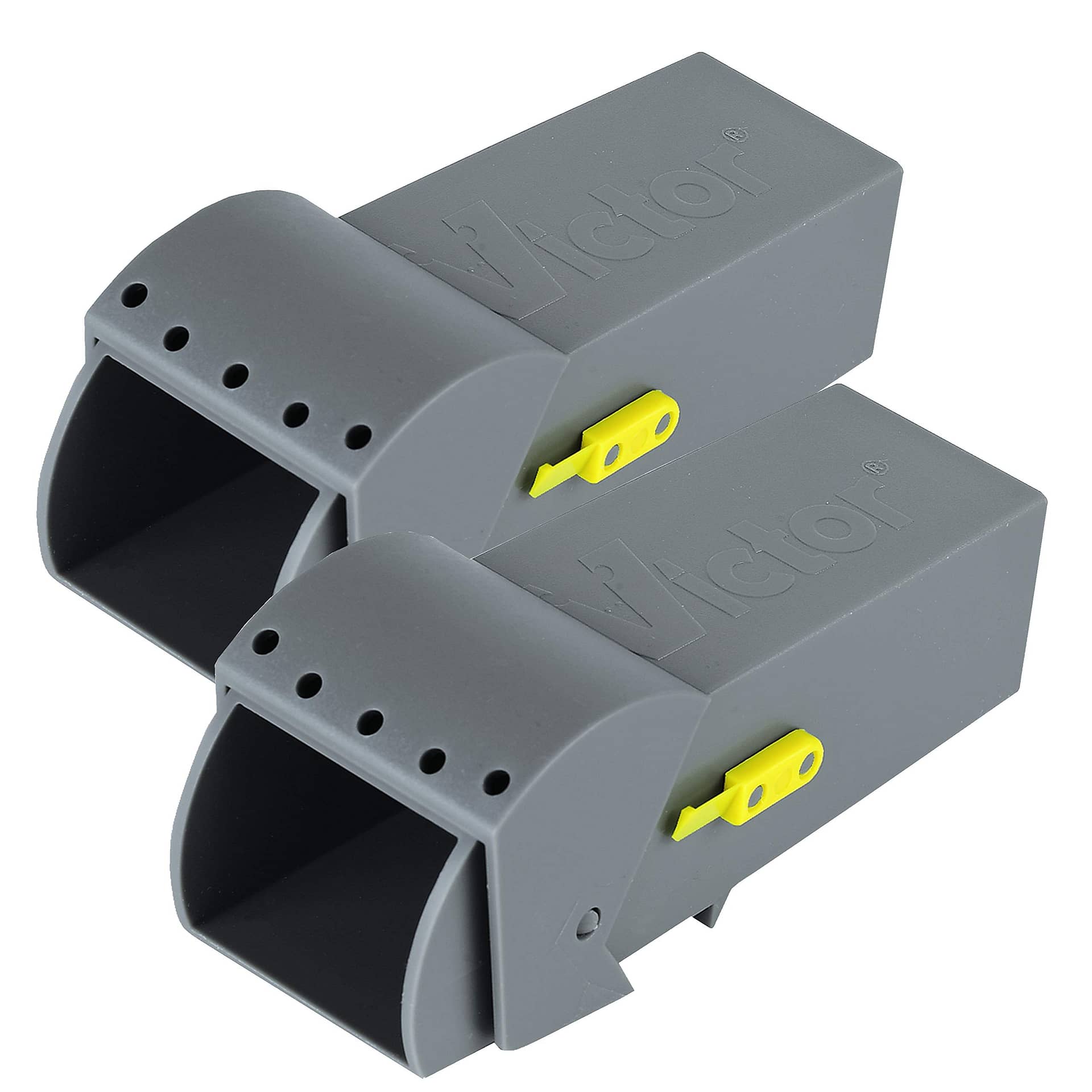Looking for DIY mouse trap ideas to catch mice at home? Here are some effective suggestions.
Finding The Right Diy Mouse Trap
Looking for effective DIY mouse trap ideas to catch mice at home? Find the right solution with these helpful suggestions and keep your house rodent-free.
Snap Traps:
- Snap traps are a commonly used type of DIY mouse trap that deliver a quick and efficient solution to catching mice at home.
- These traps consist of a spring-loaded metal bar that snaps shut when activated by a mouse.
- Here are some key points about snap traps:
- Affordable and readily available at most stores
- Easy to set up and use
- Can be baited with various food items such as peanut butter or cheese
- Ensure that traps are placed in areas where mouse activity is evident, such as along walls or in dark corners
- Check traps regularly and dispose of captured mice promptly
Live Traps:
- Live traps are a humane alternative to traditional snap traps, allowing you to catch mice without causing harm.
- These traps work by luring mice inside and safely trapping them until they can be released elsewhere.
- Here are some advantages of using live traps:
- Protects mice from harm while still addressing the issue of unwanted guests
- Allows you to release mice into their natural habitat outside your home
- Can be baited with food such as bread or nuts
- Regularly check the traps to prevent mice from becoming stressed or injured
- Once caught, release the mice in an outdoor area away from your home
Glue Traps:
- Glue traps are another DIY method for mouse trapping, utilizing a sticky surface to catch mice.
- These traps are relatively inexpensive and can be easily placed in areas of high mouse activity.
- Here are some points to consider about glue traps:
- Effective in catching mice without using harmful chemicals
- Place traps along walls or near areas where mouse droppings or chew marks are visible
- Make sure to check the traps regularly to prevent the mice from suffering unnecessarily
- After catching a mouse, carefully dispose of the trap to minimize any contact with the trapped mouse
Bucket Traps:
- Bucket traps offer an alternative DIY solution to catching mice using a simple setup.
- These traps utilize a container, such as a bucket, with a ramp and bait to entice mice to fall into the bucket.
- Here are some points to note about bucket traps:
- Set up the trap by placing a ramp leading to the edge of the bucket with bait placed at the end
- Fill the bottom of the bucket with water to ensure that the mice cannot escape
- Check the trap regularly and empty the bucket once mice have been caught
- Protect the trap from other pets or children to avoid accidental contact with the water

Credit: macgyverisms.wonderhowto.com
Diy Mouse Trap Ideas Using Household Items
Catch mice at home with these effective DIY mouse trap ideas using household items. Save money and keep your home free from unwanted pests.
Diy Bottle Mouse Trap
- Creating a DIY mouse trap using a bottle is an easy and cost-effective solution to catch pesky mice in your home. Here’s how you can do it:
- Materials:
- Empty plastic bottle
- Wooden dowel or pencil
- Strong adhesive
- Bait (cheese, peanut butter, or chocolate)
- Steps:
- Cut a small rectangular hole in the side of the bottle, large enough for a mouse to enter.
- Take the wooden dowel or pencil and place it across the top of the bottle, creating a ramp for the mouse.
- Secure the dowel or pencil in place using strong adhesive to prevent it from moving.
- Apply bait, such as cheese or peanut butter, on the bottle’s inner edge and near the hole to attract the mouse.
- Position the trap in an area where you suspect mouse activity, ensuring the hole aligns with the surface.
- As the mouse enters the bottle to reach the bait, the trap’s slippery interior will make it difficult for them to escape.
- Advantages:
- No harm comes to the mouse as it can be released outdoors.
- It is a budget-friendly option that utilizes common household items.
- The trap can be easily assembled and set up without any professional help.
Diy Cardboard Tube Mouse Trap
- Another effective DIY mouse trap can be created using a cardboard tube, commonly found in paper towel or toilet paper rolls. Let’s see how you can make this trap:
- Materials:
- Cardboard tube
- Empty container (like a bucket or trash can)
- Bait (such as peanut butter or chocolate)
- Ruler or stick
- Steps:
- Place the bait at one end of the cardboard tube, ensuring it is secured inside.
- Balance the tube on the edge of a countertop or table, with the baited end hanging directly over the container.
- Put the container under the tube to catch the mouse when it falls during the trap’s activation.
- Use a ruler or stick to create a ramp leading up to the hanging end of the tube, encouraging the mouse to climb onto it.
- As the mouse steps onto the tube to reach the bait, the tube will lose balance and drop, causing the mouse to fall into the container.
- Advantages:
- This trap can be easily set up using readily available household items.
- It offers a humane approach to catch mice without causing harm.
- The tube can be reused multiple times after releasing the mouse.
Diy Bucket Mouse Trap
- A DIY bucket mouse trap is a highly effective method to catch multiple mice at once. Here’s how you can make one:
- Materials:
- Tall bucket or container
- Ruler or stick
- String or wire
- Bait (such as bacon or peanut butter)
- Ramp or plank
- Steps:
- Position the tall bucket in an area with mouse activity.
- Create a ramp or plank leading up to the rim of the bucket, ensuring a stable pathway for the mouse to walk on.
- Tie one end of the string or wire around the handle of the bucket and the other end to the ramp or plank.
- Apply bait to the far end of the ramp or plank, near the top of the bucket.
- As the mouse climbs up the ramp to reach the bait, the string will release, causing the ramp to tilt and the mouse to fall into the bucket.
- Ensure the bucket is deep enough to prevent the mouse from escaping.
- Advantages:
- It allows for the capture of multiple mice at once.
- The trap can be set up easily using household materials.
- It offers a humane approach to catch mice without causing harm.
Remember to check the traps frequently and release the mice outdoors to ensure a humane approach to pest management in your home.
Natural Pest Control Options
Discover effective and DIY mouse trap ideas to naturally control pests in your home. These innovative solutions provide humane ways to catch mice without the use of harmful chemicals or professional assistance.
Using Peppermint Oil:
- Peppermint oil, with its strong scent, is an effective natural mouse repellent. Here’s how you can use it to keep those pesky critters at bay:
- Soak cotton balls in peppermint oil and place them strategically around your home, focusing on areas where mice are likely to enter or frequent. The strong smell of peppermint is a deterrent that mice find unpleasant, keeping them at a distance.
- Mix a few drops of peppermint oil with water in a spray bottle and mist it around your home, paying extra attention to areas near potential entry points. This creates a barrier that mice are reluctant to cross.
- Consider growing peppermint plants in your garden or near entry points to naturally repel mice from getting close to your home.
Remember to regularly refresh the peppermint oil, as the scent may fade over time.
Essential Oils As Deterrents:
- Apart from peppermint oil, there are several other essential oils that can be effective in deterring mice. Here are some options to consider:
- Eucalyptus oil: The potent aroma of eucalyptus oil can repel mice effectively. Soak cotton balls in eucalyptus oil and place them in areas where mice are a problem.
- Clove oil: Clove oil contains a compound called eugenol, which mice find offensive. Dab some clove oil onto cotton balls and strategically place them to keep mice away.
- Tea tree oil: The strong scent of tea tree oil is an effective mouse deterrent. Mix a few drops with water and use it as a spray to create a barrier in mouse-prone areas.
- Peppermint oil (mentioned earlier) is also an excellent choice.
Using essential oils not only keeps your home mouse-free but also adds a pleasant aroma to your living space.
Natural Predators As Mouse Catchers:
- If you prefer a natural approach to dealing with mice, consider using natural predators as mouse catchers. These natural-born hunters can help control the mouse population in your home. Here are some options:
- Cats: Cats are known for their hunting skills and can be excellent mouse catchers. Consider adopting a cat or encouraging neighborhood cats to visit your property. Their mere presence can deter mice from entering your home.
- Dogs: Some dog breeds, such as terriers, have strong hunting instincts that can be harnessed to catch mice. If you have a dog, train them to track and catch mice.
- Birds of prey: Owls and hawks are natural predators of mice. By installing owl or hawk boxes in your garden, you can attract these birds and enlist their help in keeping the mouse population under control.
- Snakes: If you’re not squeamish about snakes, consider having non-venomous species like garter snakes around. They are skilled mouse hunters and can be quite effective in reducing mouse numbers.
Remember, when using natural predators, it’s essential to prioritize the safety and welfare of both the predator and other pets or animals in your home.
By utilizing natural pest control options like peppermint oil, essential oils, or natural predators, you can effectively keep mice at bay without relying on harmful chemicals or traps. These methods are not only environmentally friendly but also humane alternatives to ensure a mouse-free home.
Frequently Asked Questions Of Diy Mouse Trap Ideas To Catch Mice At Home
What Are The Best Homemade Traps For Mice?
Some effective homemade traps for mice include snap traps, glue traps, live traps, and bucket traps.
What Is The Easiest Diy Mouse Trap?
The easiest DIY mouse trap is a bucket trap – a simple and effective method for catching mice at home.
How Do You Make A Easy Mouse Trap At Home?
To make an easy mouse trap at home, use a cardboard tube and place bait inside. Coat the tube’s edge with oil to prevent escape.
What Is The Fastest Way To Catch A Mouse In Your House?
To catch a mouse quickly in your house, use snap traps baited with peanut butter or cheese.
Conclusion
These DIY mouse trap ideas provide effective and cost-efficient solutions for catching mice at home. By considering natural ingredients like peppermint oil and vinegar, you can repel mice without using harmful chemicals. The creative use of everyday household items, such as buckets and soda bottles, allows for the construction of homemade traps that are just as effective as store-bought alternatives.
Moreover, the bait options, such as peanut butter or cheese, are easily accessible and enticing to mice. Remember to position the traps appropriately in areas with high mouse activity and to regularly check and empty them. While prevention is the best approach, these DIY traps can help you address existing mouse problems quickly and efficiently.
With these tips and ideas, you can keep your home mouse-free in a safe, affordable, and eco-friendly way.


